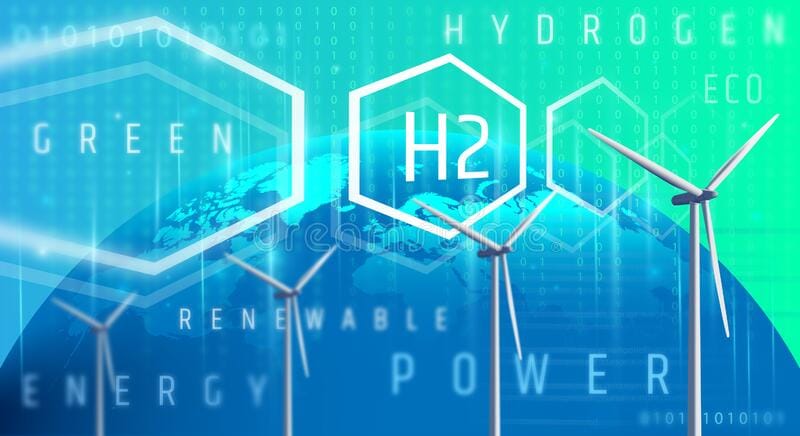The Ministry of Power issued a Green Hydrogen/Green Ammonia Policy in February 2022 for the production of green hydrogen or green ammonia utilising renewable energy sources.
The National Hydrogen Mission, which began in 2021, aims to assist the government in achieving its climate goals and transforming India into a green hydrogen powerhouse.
There are 3 types of hydrogen available that are Grey hydrogen, Blue hydrogen and Green hydrogen.
Grey hydrogen is formed by splitting of natural gas in hydrogen and carbon dioxide (CO2) . It will affect the environment because in return CO2 is emitted in the environment.
It constitutes India’s bulk production ,extracted from hydrocarbons ( fossils fuel ,natural gas)
Blue hydrogen is formed by splitting natural gas into Hydrogen and Carbon Dioxide ( CO2) originated from fossil fuels.
It will affect the environment in less amount than the Grey hydrogen amount because the byproducts which release CO and CO2 are stored and reused.
Green hydrogen is formed by splitting water into hydrogen and oxygen in an electrolyzer utilising renewable energy sources like wind ,water and solar. It will not affect the environment in any way because in this process the byproducts are water and water vapour no carbon dioxide is emitted in the environment.
In order to achieve the target of carbon neutral till 2070, Larsen and Toubro ( L&T) ,Indian oil corporation and Renew power
have agreed to form a joint venture and have signed the binding sheet to expand the green hydrogen industry. In addition, a binding term sheet from Indian oil and L&T to form a joint venture with equal participation to make and sell the electrolyzers which is going to used for the formation of green hydrogen
The planned JVs are aimed at assisting India’s transition from a grey hydrogen economy to a greener one that produces hydrogen more frequently using electrolysis powered by renewable energy.
The fuel has the potential to transform India’s energy security, as it imports 85 percent of its oil and 53 percent of its gas.
India is considering making it necessary for fertiliser factories and oil refineries to purchase green hydrogen in order to encourage clean fuels.
Currently, nearly all hydrogen produced in India is grey hydrogen made from natural gas ammonia; however, by 2050, over 80% of India’s hydrogen will be green hydrogen.
What does the Green Hydrogen/Green Ammonia Policy entail?
The government is proposing to establish manufacturing zones, priority connectivity to the ISTS (Inter-State Transmission System), and free transmission for 25 years if the production facility is completed before June 2025, According to the policy, if the production plant is finished before June 2025, the ISTS (Inter-State Transmission System) will provide free transmission for 25 years. This means that a green hydrogen producer in Rajasthan may build a solar power plant to send renewable energy to a green hydrogen plant in Assam without having to pay interstate transmission fees. Additionally, producers will be allowed to build bunkers near ports for the storage of green ammonia for export. The production goal has been increased five times by 2030, from 1 million tonnes (m) to 5 million tonnes (mt). India announced in October 2021 that by 2030, it intends to create approximately 1 million tonnes of renewable hydrogen per year. Renewable energy can be purchased by green hydrogen and ammonia generators.They can use the power exchange or any other developer to install renewable energy capacity wherever. It also permits producers to store any extra renewable energy generated for up to 30 days with discoms (power distribution companies) and use it as needed.
Under the new legislation, discoms may also acquire renewable energy to supply green hydrogen manufacturers, but only at a reduced rate that includes only the cost of procurement, wheeling costs, and a small margin defined by the state commission.
Such purchases would also count against a state’s Renewable Purchase Obligation (RPO), which requires the state to obtain a specific percentage of its energy needs from renewable sources.
MNRE will provide a single gateway for carrying out all activities, including statutory clearances, in a timely manner to ensure ease of doing business (Ministry of New and Renewable Energy) .
Pros: is a low-carbon compound that can help decarbonize industries like steel, chemicals, and transportation.
Renewable energy that cannot be stored or used by the grid can be used to produce hydrogen.









